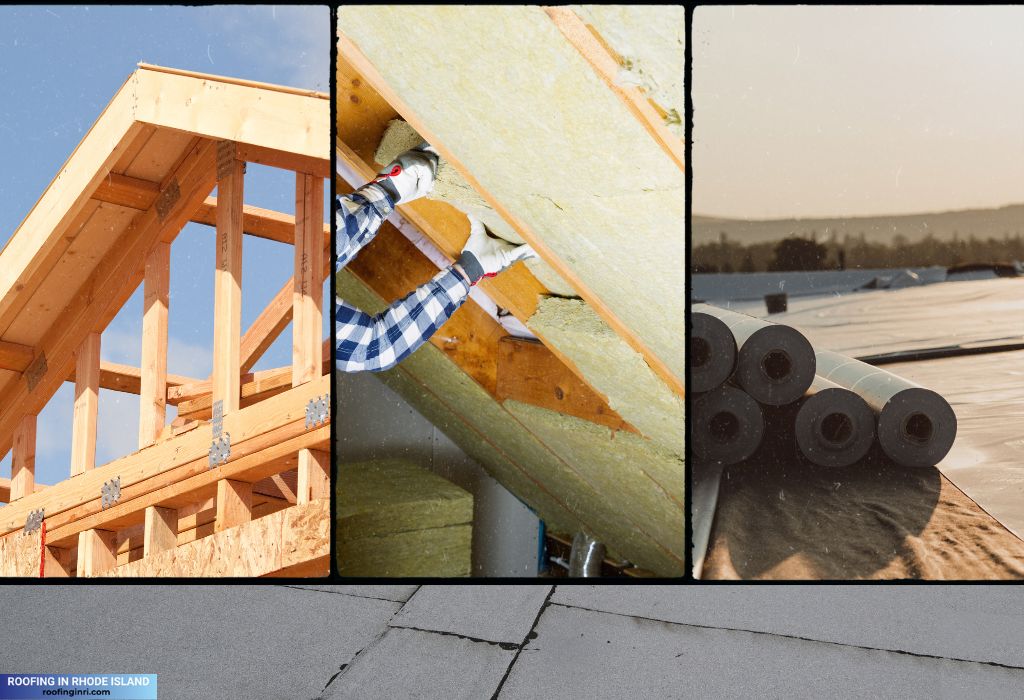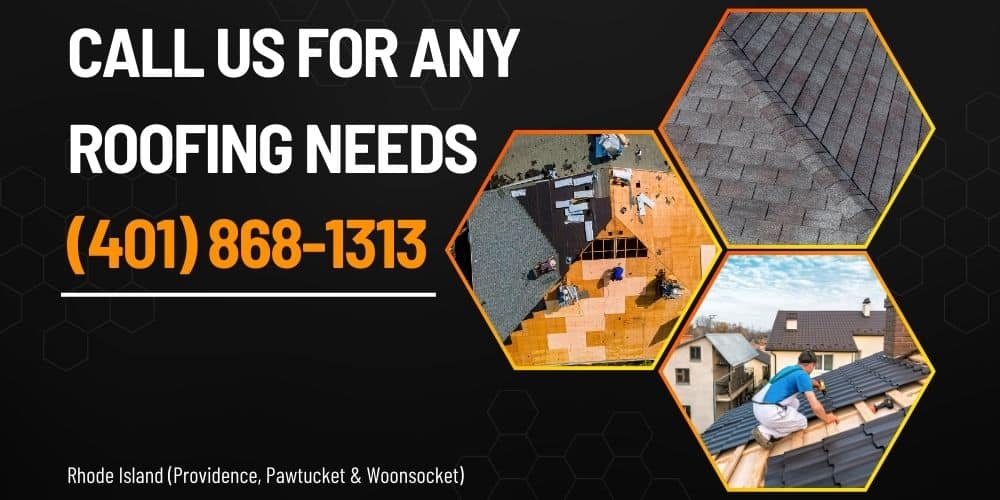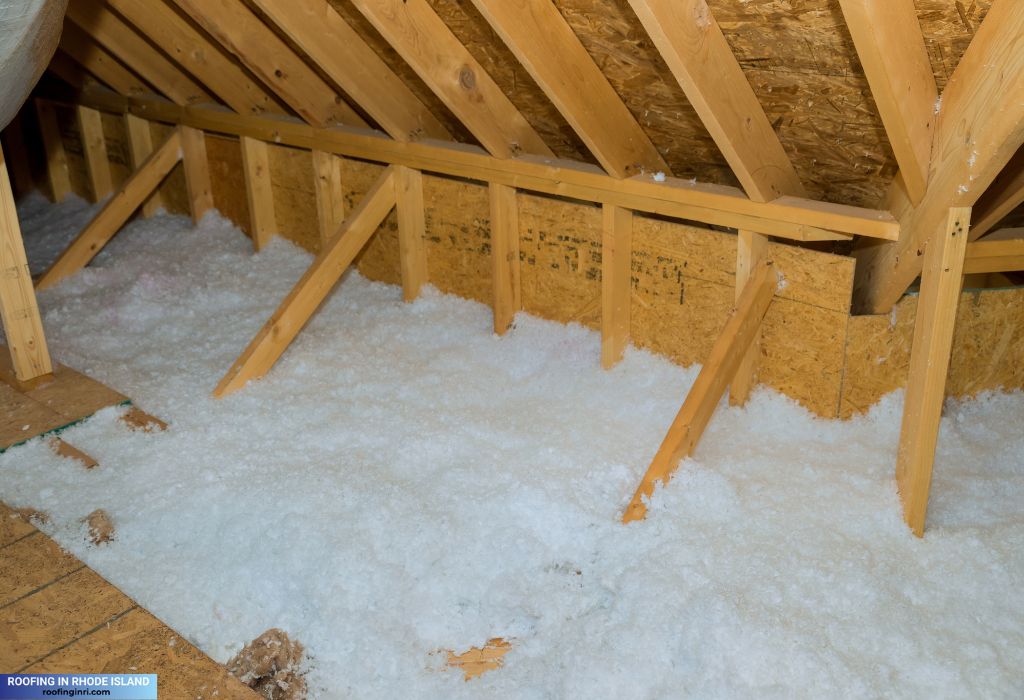The natural environment in your region plays a vital role in choosing the type of roofing system. If cold persists most of the year, opt out of a hot roofing system. But if the weather is the opposite, a cold roofing system would be an excellent fit for you.
Choosing a specific roofing system between hot and cool becomes very confusing if the duration of cold and hot weather is nearly similar. Also, the harsh weather has a significant impact, such as the severity of coldness or heat.

Understanding the distinction between hot and cold roofs is essential among the myriad of options available. Each type has its own advantages and considerations, and making an informed choice can save you money and energy and ensure the longevity of your roof.
So, what exactly are hot and cold roofs, and how do they differ? Let’s dig into the complexities of each.
Hot roofs

A hot roof, also known as a warm roof, is a roofing system where insulation is placed either above or below the roof deck, directly under the roof membrane. In this setup, the entire roof assembly, including the deck and insulation, is kept at a temperature close to that of the interior of the building.
The pros and cons of black roofs →
Components of a hot roof

- Roof Deck: This is the structural base layer of the roof, usually made of wood or metal.
- Insulation: Insulation is installed either on top of the roof deck (over-roofing) or directly beneath the roof membrane (under-roofing).
- Roof Membrane: The waterproof layer, typically made of materials like asphalt, EPDM (ethylene propylene diene terpolymer), or PVC (polyvinyl chloride).
Understanding roof installation: a comprehensive guide →
Advantages of hot roofs

Energy efficiency
By maintaining a consistent temperature across the roof assembly, hot roofs help regulate indoor temperatures more efficiently, reducing heating and cooling costs.
Related: Benefits of EPDM membrane roofing systems →
Moisture control
Since the entire roof assembly is kept warm, hot roofs minimize the risk of condensation forming within the structure, which can lead to mold, rot, and other moisture-related issues.
Best roofing materials for flat roofs →

Durability
The even temperature distribution helps prevent thermal cycling, which can cause materials to expand and contract, leading to premature wear and tear.
Read also: How does recoverable depreciation work in a roof insurance claim?
Snow melting
In colder climates, hot roofs can help prevent ice dams from melting snow before they cause damage to the roof.
Hot roofs maintain a consistent temperature in the entire roof surface. The insulation placed directly beneath or above the roof deck traps heat from the interior of the building, transferring it to the roof surface.
This warmth melts snow on contact, allowing it to drain off the roof rather than accumulate and form dams. By keeping the roof temperature above freezing, hot roofs effectively prevent snow buildup and mitigate the risk of damage caused by ice dams.
Cold roofs
Contrary to hot roofs, cold roofs are designed to maintain a temperature gradient between the interior and exterior of the roof assembly.

In a cold roof system, insulation is typically installed in the ceiling joists of the attic rather than directly under the roof deck. This allows for ventilation between the insulation and the underside of the roof deck, ensuring that the roof remains cold during winter and helps expel heat during the summer.
Your options when you need a new roof but can’t afford it →
Components of a cold roof

- Ceiling Joists: These are the horizontal structural members that support the ceiling and provide a space for insulation.
- Insulation: Insulation is placed between the ceiling joists, creating a thermal barrier between the interior of the home and the roof.
- Ventilation: Soffit vents and ridge vents are commonly used to allow air to flow through the attic space, carrying away excess heat and moisture.
Active vs. passive ventilation →
Advantages of cold roofs

- Cost-Effectiveness: Cold roofs typically require less insulation than hot roofs since they rely on the natural flow of air for temperature regulation. This can result in lower upfront costs.
- Ventilation: Cold roofs generally have a soffit ventilation system. It allows air to flow through the attic space, creating a continuous exchange of air between the interior and exterior of the roof assembly. Typically, soffit vents are installed along the eaves of the roof, while ridge vents or gable vents are placed near the peak of the roof. This airflow helps regulate the temperature and humidity levels in the attic, preventing the buildup of heat and moisture that can lead to condensation, mold, and other moisture-related issues.
- Versatility: Cold roofs can be easier to retrofit into existing homes since they do not require significant modifications to the roof structure.
Advantages of prefabricated roofing →
Choosing the right roofing system
When deciding between a hot roof and a cold roof, several factors should be taken into consideration:
- Climate: Hot roofs are generally more suitable for colder climates, where preventing heat loss and snow melting are top priorities. Cold roofs, on the other hand, are better suited to warmer climates, where the focus is on expelling excess heat and moisture.
- Building Design: The architecture of your home, including the presence of an attic or cathedral ceilings, will influence which roofing system is most appropriate.
- Budget: While hot roofs may offer long-term energy savings, they typically require a larger upfront investment compared to cold roofs. Consider your budget and future living plan when making your decision.
- Local Building Codes: Be sure to consult with professionals to ensure compliance with regulations regarding insulation, ventilation, and energy efficiency.
A guide to skylight insulation →
Conclusion
The choice between a hot and cold roof depends on climate, building design, budget constraints, etc.
Choosing between hot and cold roofs is straightforward in regions with predominantly cold or hot climates. However, the decision can be more complex in areas with similar durations of cold and hot weather. An expert roofer can help you to make the right choice and add supportive features.
Understanding the advantages and differences between hot and cold roofs is crucial for making an informed choice. Factors such as climate, building design, budget, and local building codes should all be considered when selecting the most suitable roofing system for your home.



